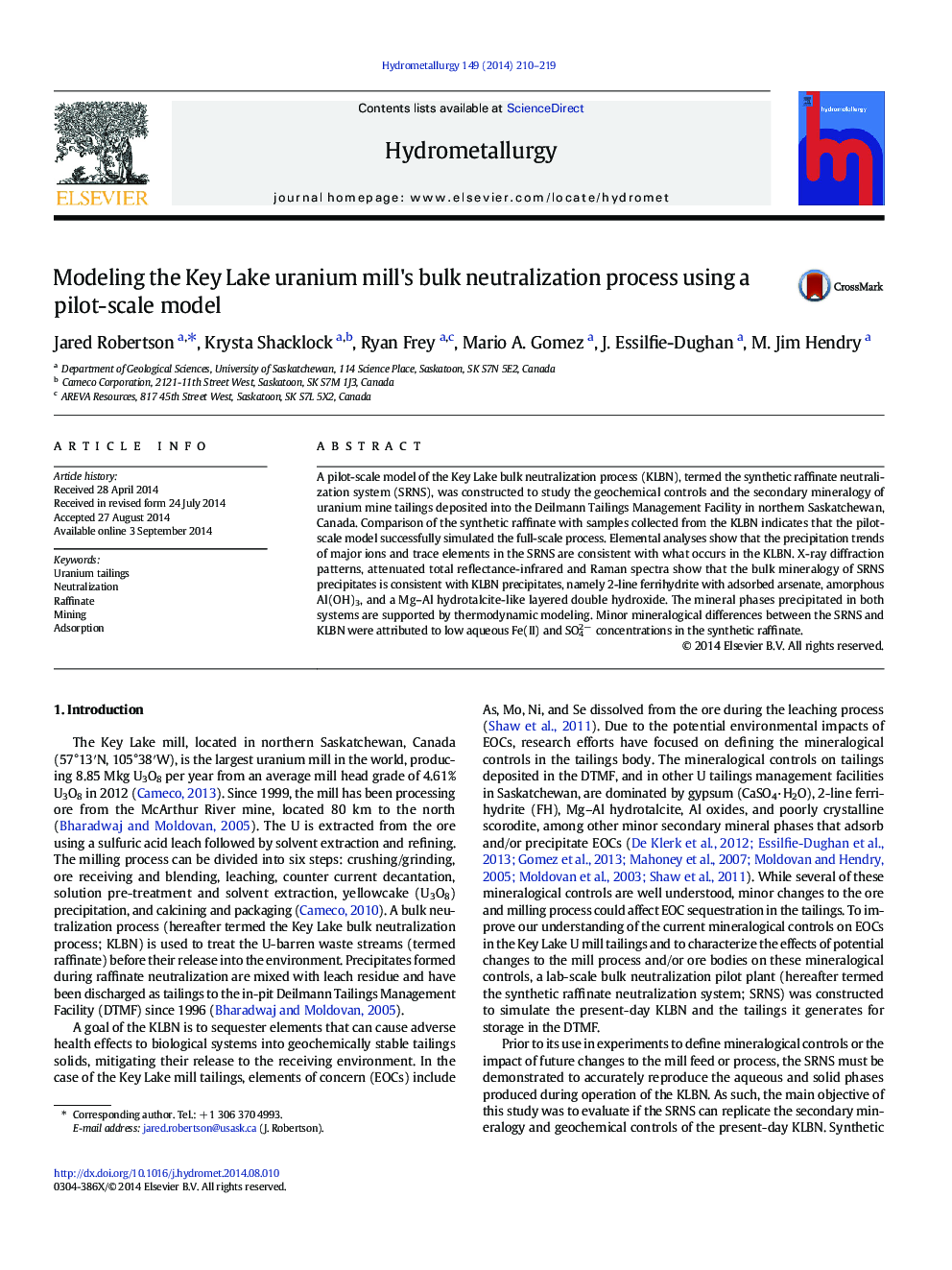| Article ID | Journal | Published Year | Pages | File Type |
|---|---|---|---|---|
| 212258 | Hydrometallurgy | 2014 | 10 Pages |
•A continuous flow model was built to model a U mill effluent neutralization process.•Model results were compared to mill aqueous and mineral phase data.•Results showed that the model accurately simulated products generated in the mill.•Geochemical controls of minerals sent to tailings can be studied with the model.•Secondary minerals from future processing scenarios can be tested with the model.
A pilot-scale model of the Key Lake bulk neutralization process (KLBN), termed the synthetic raffinate neutralization system (SRNS), was constructed to study the geochemical controls and the secondary mineralogy of uranium mine tailings deposited into the Deilmann Tailings Management Facility in northern Saskatchewan, Canada. Comparison of the synthetic raffinate with samples collected from the KLBN indicates that the pilot-scale model successfully simulated the full-scale process. Elemental analyses show that the precipitation trends of major ions and trace elements in the SRNS are consistent with what occurs in the KLBN. X-ray diffraction patterns, attenuated total reflectance-infrared and Raman spectra show that the bulk mineralogy of SRNS precipitates is consistent with KLBN precipitates, namely 2-line ferrihydrite with adsorbed arsenate, amorphous Al(OH)3, and a Mg–Al hydrotalcite-like layered double hydroxide. The mineral phases precipitated in both systems are supported by thermodynamic modeling. Minor mineralogical differences between the SRNS and KLBN were attributed to low aqueous Fe(II) and SO42− concentrations in the synthetic raffinate.
